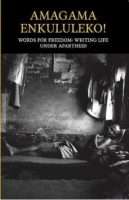While some Africans did move to the new cities, it benefited the mine owners to keep miners as migrant labourers. If they and their families had become permanent residents of the cities, the mines would have been put under pressure to pay them a higher wage to support their families’ costs of living. But by employing them as migrant labour they could ignore the miners’ costs of supporting their families, because in theory these would be met by subsistence farming in rural areas. One of the purposes of the Land Act was to force small, independent black African farmers off their land and onto big commercial farms or the mines as cheap, migrant labourers. By the time it became law South Africa was already moving in the direction of forcing races to live apart from one another on a permanent basis and on land specifically marked for them. The white minority government passed the Native’s Land Act on 19 June, 1913. It had a serious effect on the African population across the country. It also laid the foundation for other laws which increased dispossession, segregation and oppression of African, Coloured and Indian people.
The Land Act made it illegal for Africans to buy or rent land in 93% of South Africa. In essence, Africans, despite being many more in number than whites, and having lived on the land for far longer, could only own 7% of South Africa’s land. This was increased to 13.5% by the Native and Land Trust Act which was passed in 1936. Africans were allowed to buy and sell land in reserves (small areas of the country under the control of the government but run by traditional chiefs) while whites could not own land in these places. These reserves were not areas with fertile land good for farming. As time went by they became more and more overcrowded and over-farmed, which caused soil erosion. Since many farmers in this area could not grow enough crops these areas were poor.
The Act prevented what it called ‘squatting’, or labour tenancy and share cropping (this was when a black family farmed on a white farmer’s land in return for working for him for a few days a week, or giving him a share of their crop) and also defined the boundaries of reserves. As explained above, the effect of the Land Act was to force black people into low wage jobs by shrinking the possibility of them owning or hiring land for farming. The Act forced them to become farm labourers employed by white farmers or to search for work elsewhere, very often on the mines as migrant labourers. For this reason, it has been described as an ‘alliance of gold and maize’.
While the Land Act was very important in the making of a racially and spatially divided South Africa, it built on the land dispossession which was already present, and did not always have an immediate effect. Its effects were also different in different parts of the country – they were toughest in the Free State, for example. Also, despite many white farmers supporting the Act, poorer white farmers often struggled to pay wages to labourers. Renting out part of their land to black farmers was a solution to this problem. This meant that some black tenant farming on white-owned land continued until at least the 1940s.
After the independent African societies were conquered and integrated into the migrant labour system, new forms of resistance started to develop which sought greater rights within the new country – South Africa – rather than a return to the precolonial situation. In 1912 the South African Native National Congress (SANNC), a forerunner of the African National Congress (ANC), was formed to protest racial exclusion, and opposed the Land Act of the following year through petitions and delegations to officials. But the SANNC was largely led by members of the small black middle class, and in its early years it often failed to identify with the struggles of the majority of black South Africans. Black workers also began to organise, and there were a number of strikes, including amongst sanitation workers and miners. During the 1920s the Industrial and Commercial Workers’ Union (ICU) spread across the country, uniting skilled and unskilled workers. At its height it claimed over 100 000 members, many of whom were based in rural areas. Here, the organisation campaigned against land dispossession, rent increases and low wages. But it struggled to have much of an effect, and by the end of the 1920s internal divisions and government opposition had torn it apart. These organisations, however, were signs of things to come: in later years both the ANC and Trade Unions would have leading roles to play in opposing racial oppression and Apartheid.


